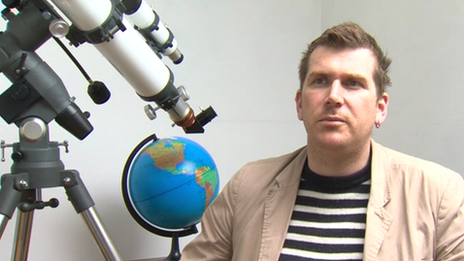Venice Biennale 2017: James Richards' sound and vision
- Published
James Richards and Phil George on Wales' entry in the Biennale 2017
Welsh artist James Richards has opened an exhibition at the world's biggest art event.
The Venice Biennale showcases the best contemporary art from around the world.
Richards has worked with Cardiff's Chapter arts centre to stage the show, which includes a 20-minute sound installation, a 40-minute film and still images.
The Cardiff artist was nominated for the Turner Prize in 2014.
He uses archive material and new recordings to create work that seeks to challenge the emotions of visitors to the exhibition.
A former chapel and school rooms on the banks of a Venetian canal host the exhibition, which is financed by the Arts Council of Wales with a budget of £375,000.
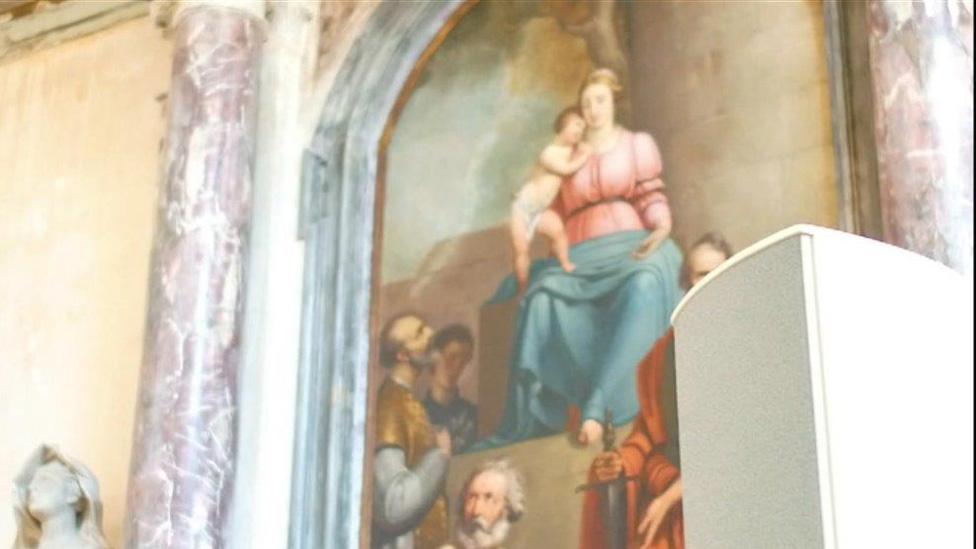
The sound piece "you can really feel in your body as well as hear"
Richards, who lives most of the time in Berlin and London, follows previous artists Helen Sear and Bedwyr Williams in representing Wales at the Biennale, and he said it was an opportunity to "experiment" at a high-profile event.
"I don't reinvent the wheel with every work but each time you do something - especially a big project, a commission that's going to be exhibited on a highly visible platform - I want to use that as a chance to experiment and expand my language as an artist," he said.
"Often, my work is about my own encountering of a particular material that makes me want to try working with something. So you build from experiments and start thinking about setting a brief for yourself, almost.
"But also, in the meantime, you find things that you realise you want to somehow explore through the work."

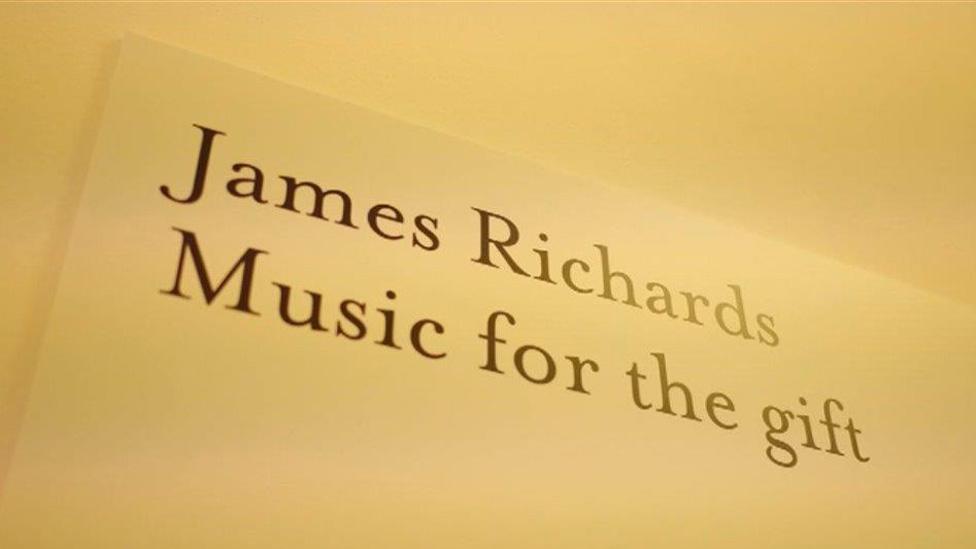
James Richards: Wales in Venice
What do visitors see?
Room 1: Sound installation
The installation is called Migratory Motor Complex. Richards collaborated with Kirsten Evans and Samuel Williams, students from the Royal Welsh College of Music and Drama, to create a surround-sound six-channel electro-acoustic experience that "explores the capacity of sound to render artificial spaces and locate sonic and melodic events within them".
Room 2: Book
Visitors collect a small yellow book, Voce di Testa, published by Richards with Chris McCormack which "moves between the intimate and the scientific" in exploring the process of a male voice breaking.
Room 3: Film
A 40-minute film called What Weakens The Flesh Is The Flesh Itself. Made by Richards and collaborator Steve Reinke, the film shows a German man obsessed with tattoos and and large piercings, which the artists have combined with other archive footage that seeks to make the body a work of art in itself.
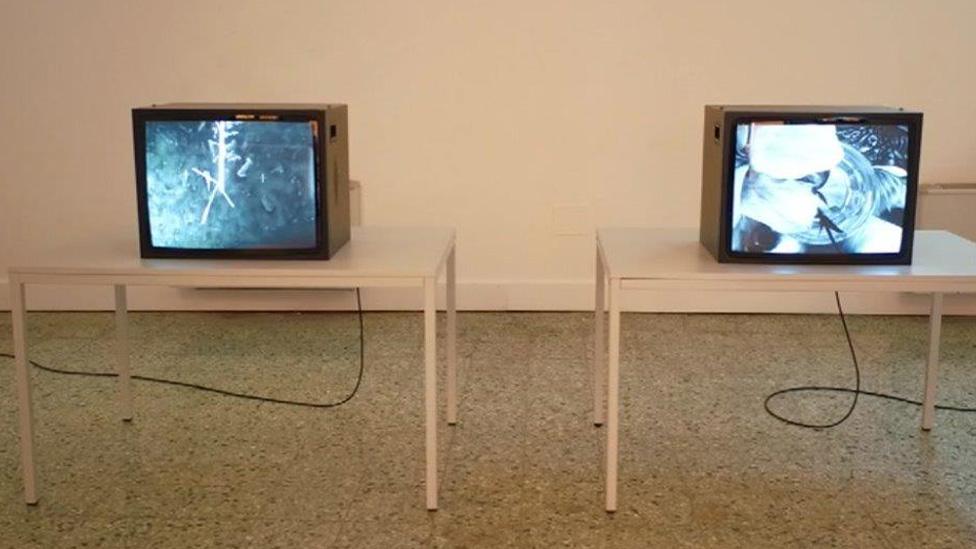
Room 4: Silent video
Music for the Gift. Two silent television monitors display abstract black and white images.
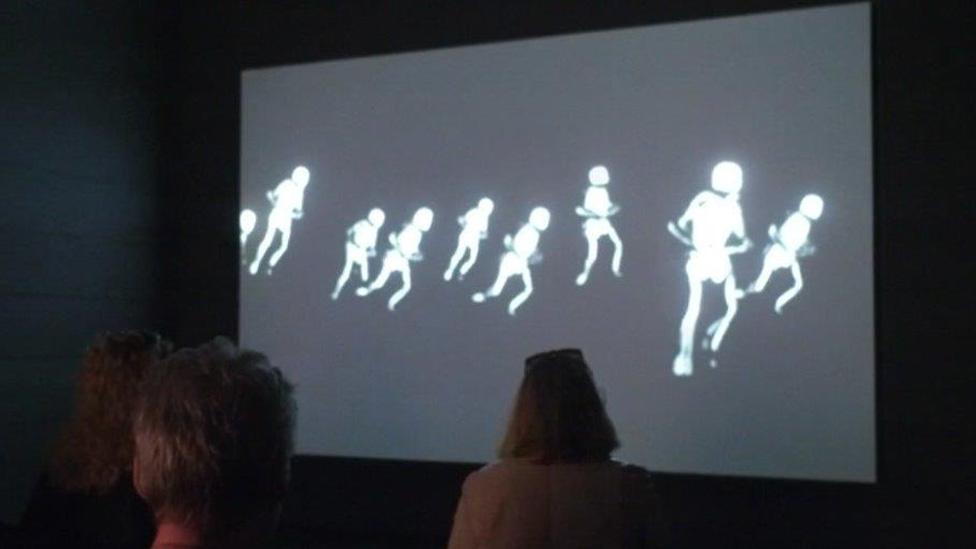
Room 5: Still images
An installation called Rushes Minotaur, which includes inkjet prints of human skin and the tarpaulin façade of a shop that have been cut together and rescanned to create new images that represent the way that images themselves can be as fragile as their subjects.

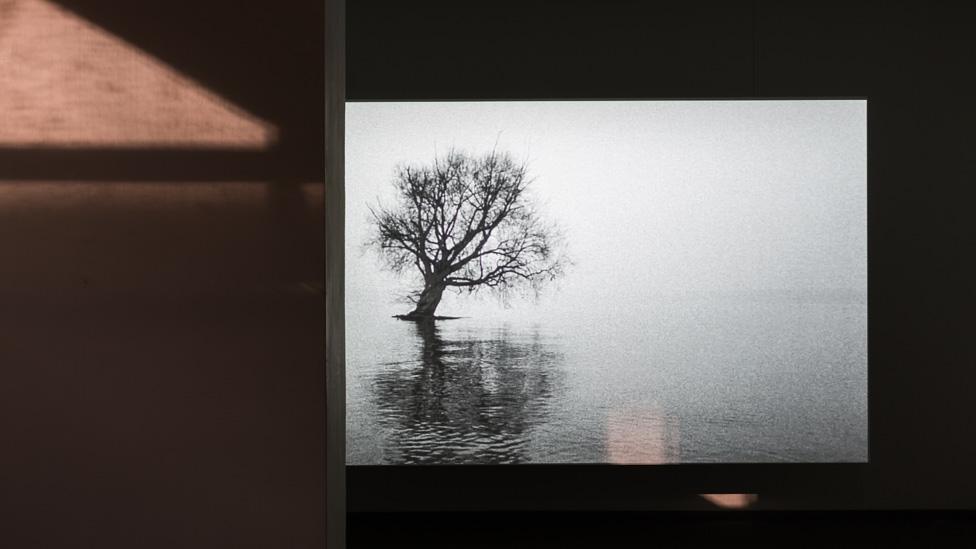
James Richards - Cabinet
The exhibition takes place inside the Santa Maria Ausiliatrice. It incorporates work by students of the Royal Welsh College of Music and Drama in its sound installation.
Richards has also collaborated with the artist Steve Reinke for the video work, while a short publication is given to visitors written by Richards and Chris McCormack which reflects upon the breaking of the male voice.
The exhibition has been curated by Hannah Firth, who said it was the result of a "year-long dialogue" with Richards, which included a residency at Chapter in Cardiff and then there was five weeks of installation.
"We had to ensure everything down to the last nail came on a truck from Wales to Venice," she said.
"We took on an agency within Wales which drove the trucks to the edge of Venice, where all traffic has to stop.
"All the work had to be then loaded onto a boat and it's incredible how it's all stacked up like a sardine tin and then it had to be uploaded up at this end."
She said there had been a "fantastic response" from visitors so far.
"One of the exciting and interesting things about James Richards' work is it's very visceral - you feel it and sense it. He's made a sound piece, which is in the main exhibition - the church space - and which you can really feel in your body as well as hear. And certainly with the film it's a very vivid, aesthetic experience.
"We really hope people will take away a very subjective reading, which has stimulated their sense while they've been here."
Phil George, chairman of Arts Council of Wales, said it was really important for Wales to be part of the international debate about art.
He called Richards' work a "remarkable exploration of the tension of what it is to be a human being in a very difficult world."
James Richards' work will be displayed at the Venice Biennale until 26 November 2017. It will then be exhibited in Chapter in Cardiff next year before going on tour.
- Published26 May 2016

- Published7 May 2015

- Published2 May 2013
